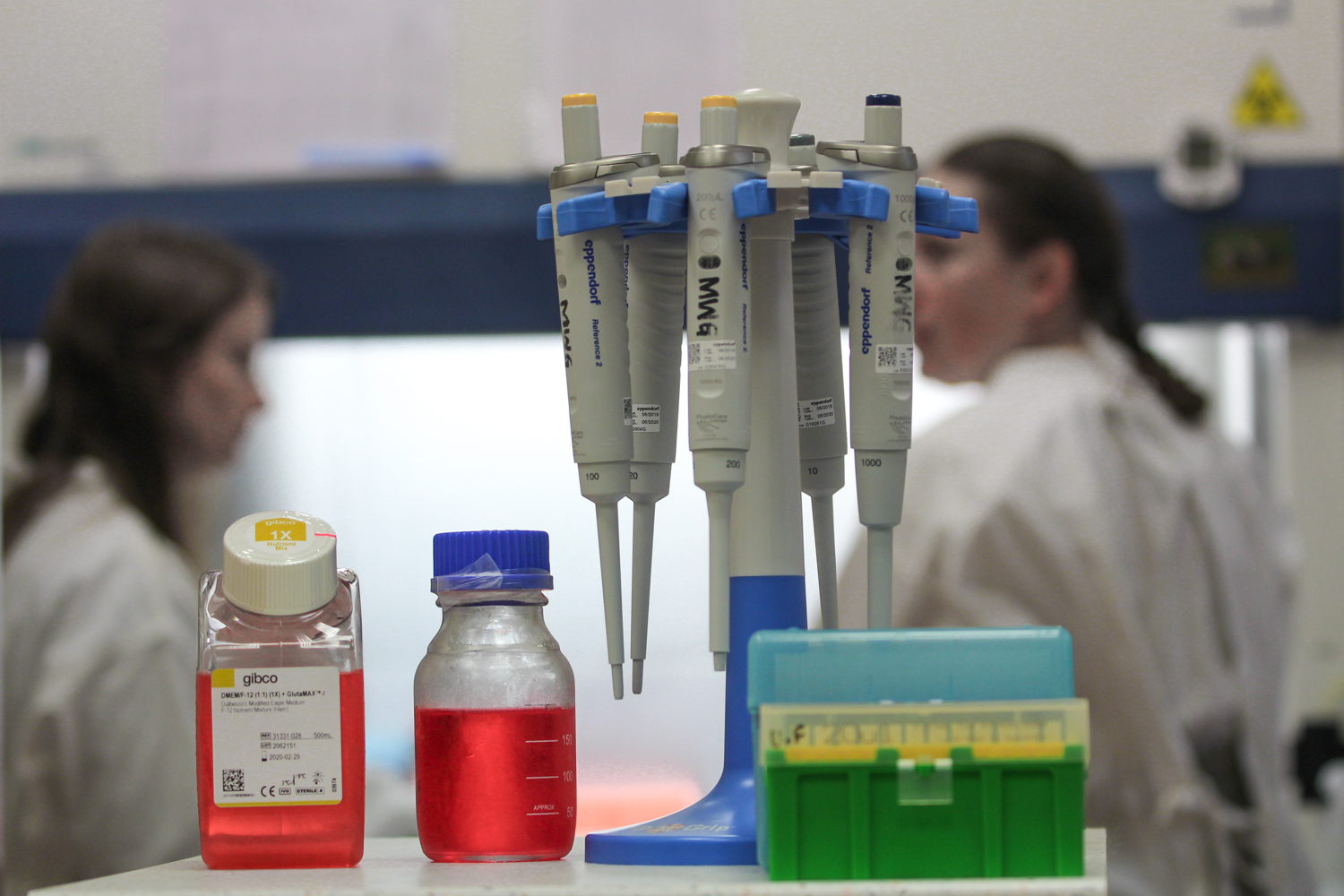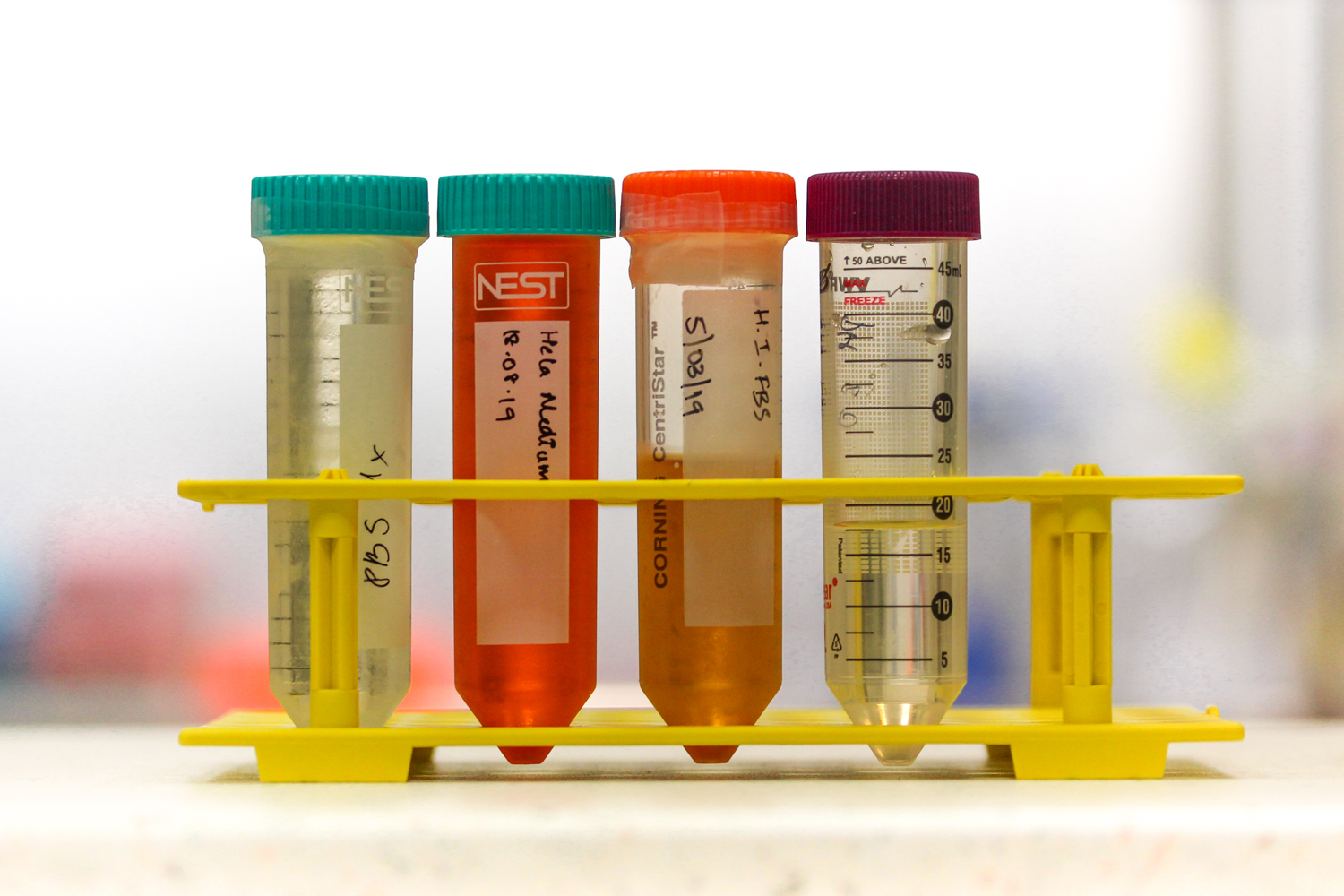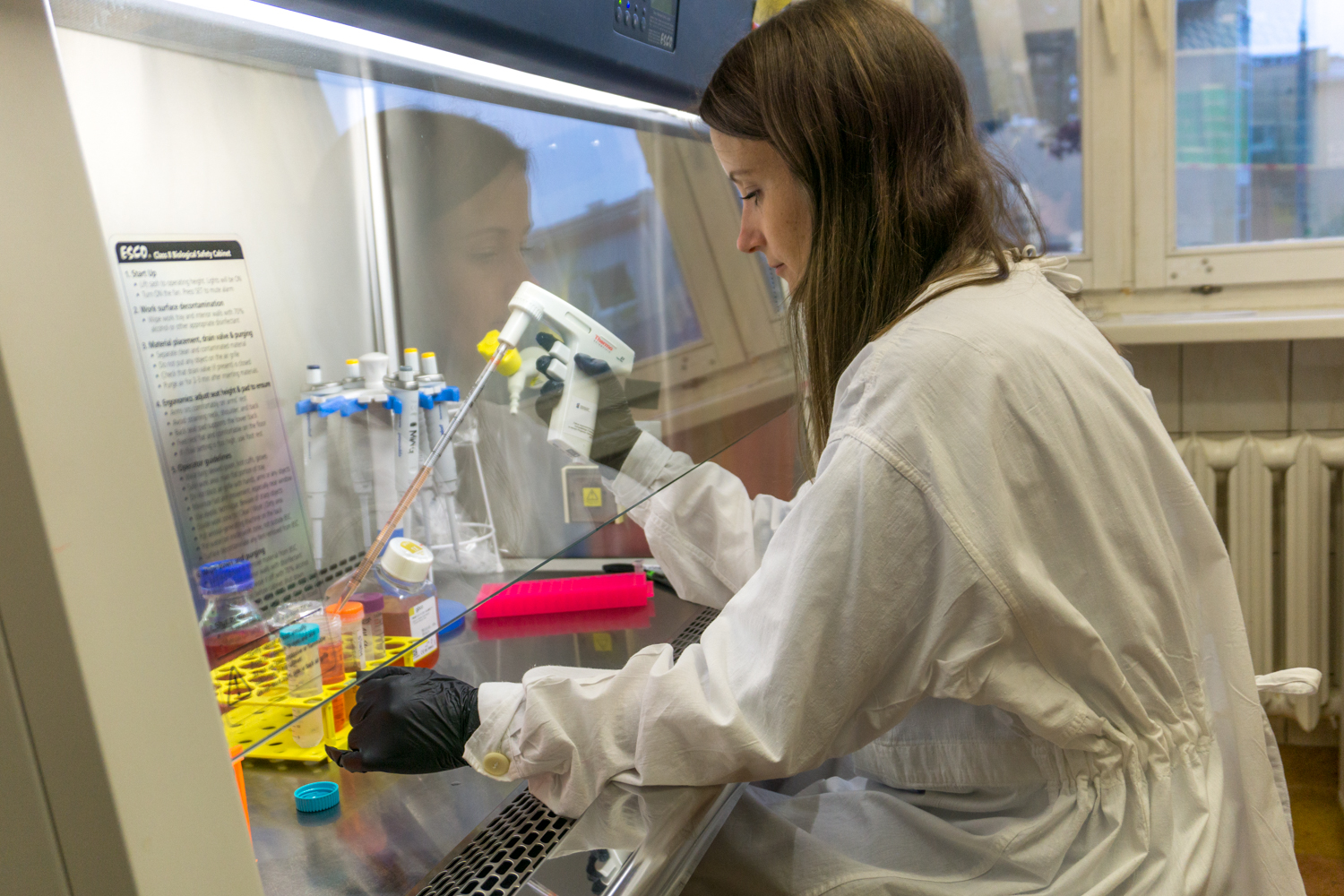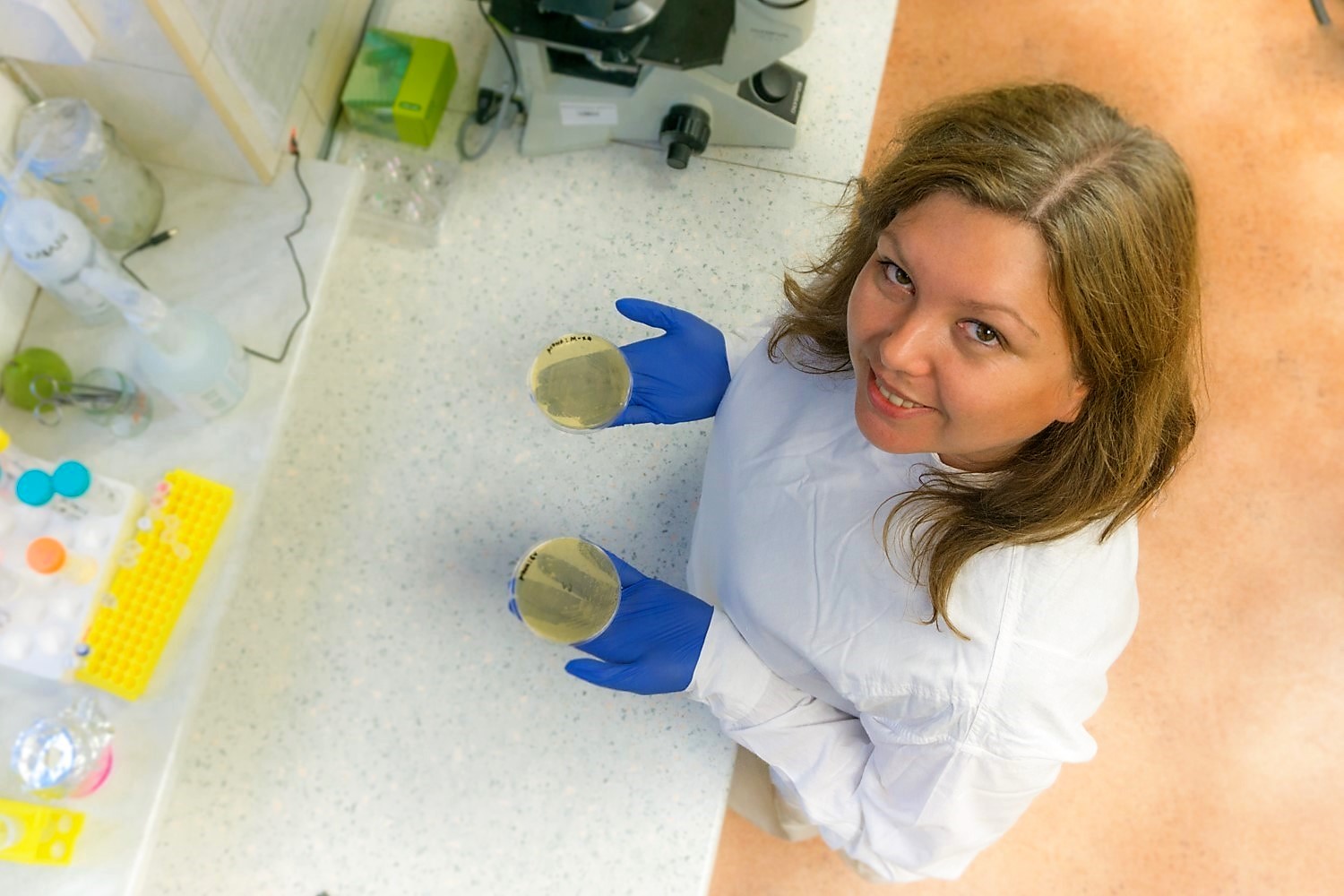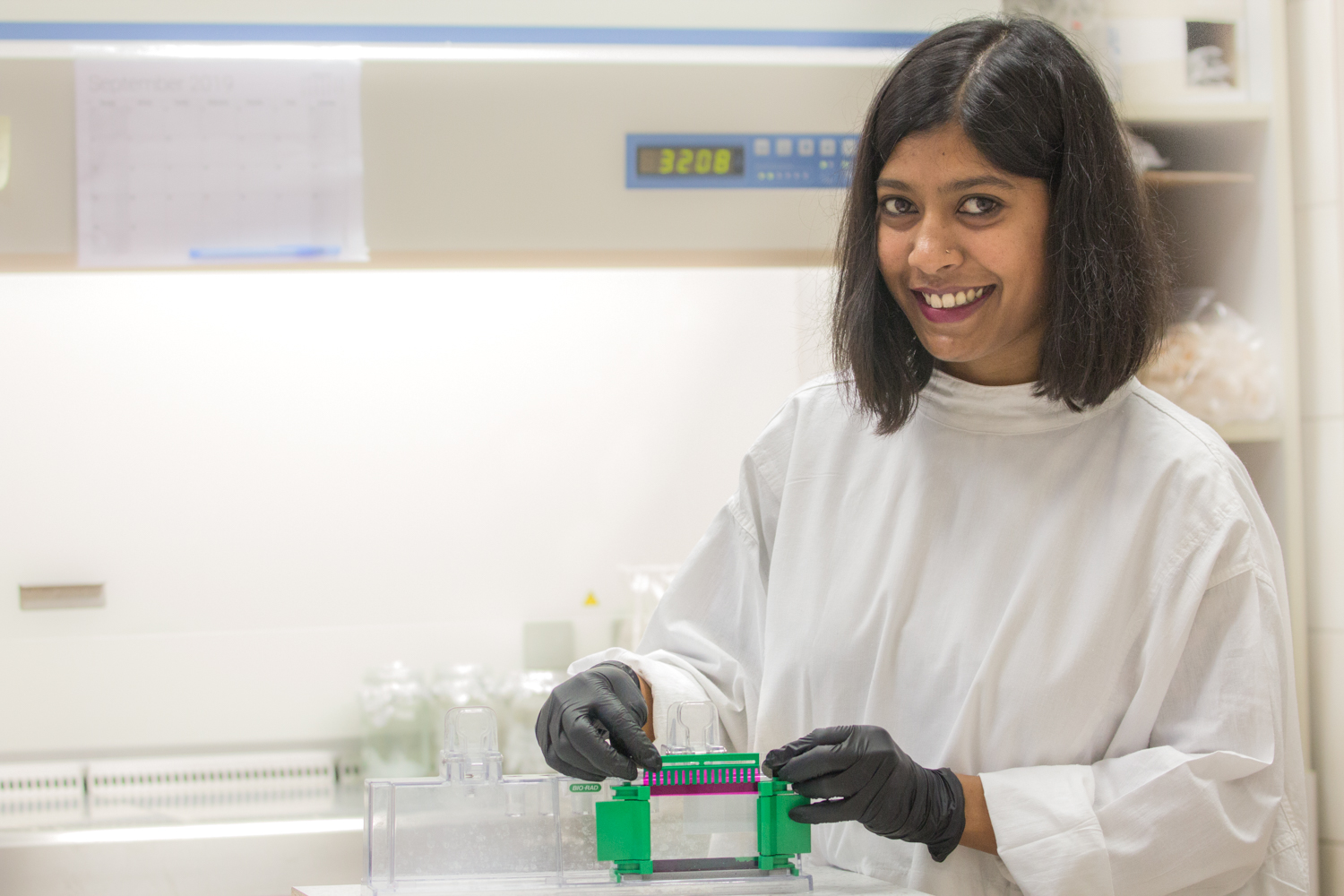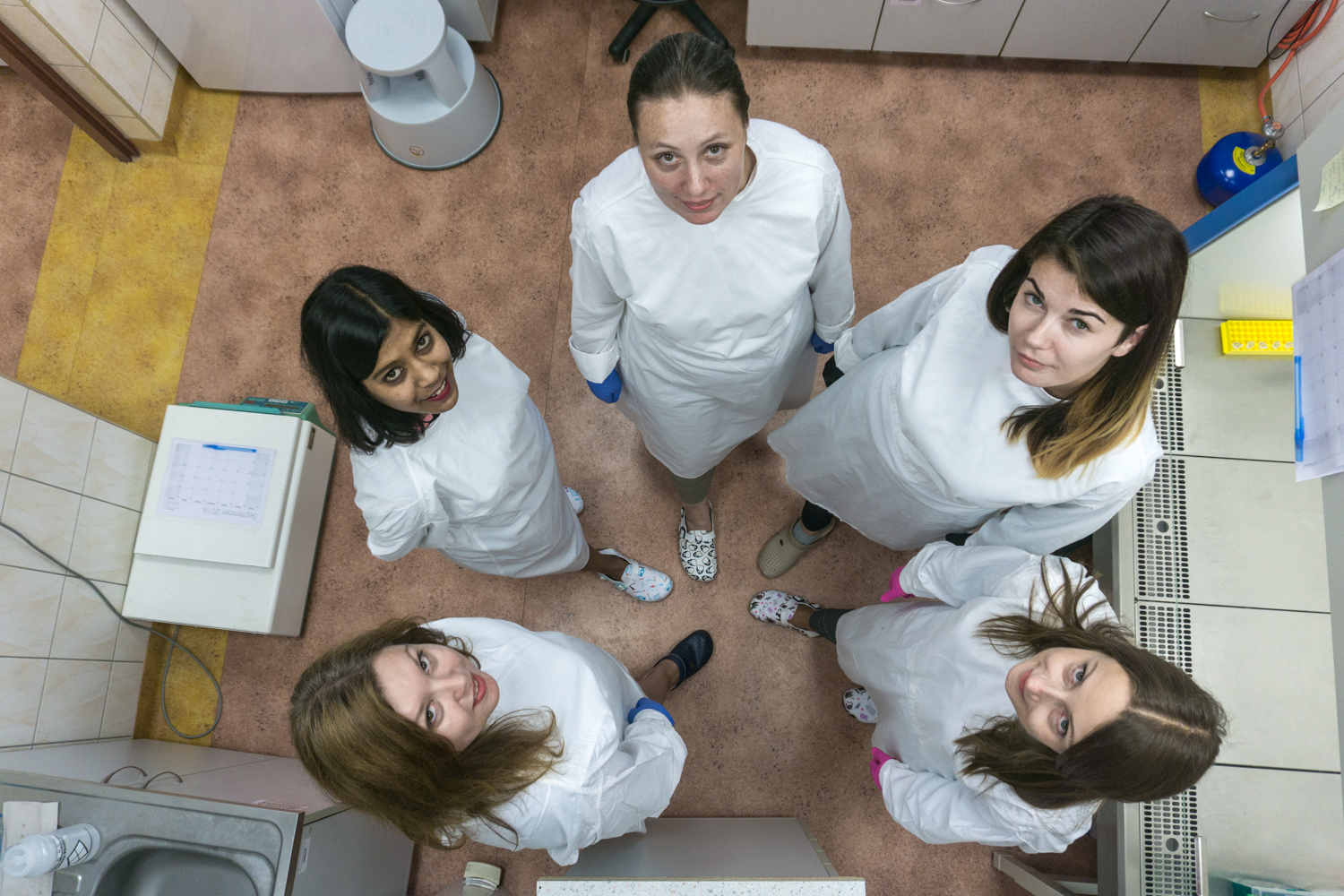The laboratory holds :
- Status of Genetic Engineering Unit class II (laboratory of biosafety level II),
- Allowance for closed use of genetically modified microorganisms (GMM) class II
and following workstations:
- Cell culture and GMM class II workstation;
- Workstation for isolation of fibroblasts from human tissue;
- Workstation for protein expression analysis (SDS PAGE + Western blot);
- Workstation for solid and liquid bacterial culture and for co-culture of bacteria with tissues.
Research profile:
The main scientific goal of the Molecular Microbiology and Virology Laboratory is to elucidate the mechanisms of cytomegalovirus congenital infection – replication, spread and latency.
Infection with human cytomegalovirus (HCMV) is very common. Primary HCMV infection in healthy individuals is usually asymptomatic, however in immunocompromised patients, for example after transplantation or with AIDS, it may cause severe disease. HCMV is also a cause of congenital disease, because this virus is able to cross from the blood circulation of the mother, through the placenta to the fetus. HCMV congenital disease is associated with infection of the central nervous system and consequently neural developmental disabilities. Symptoms associated with the HCMV congenital disease are for example: hearing loss, eye sight compromise, and learning disabilities.
As is the case for all the herpesviruses the life cycle of HCMV can be divided into lytic phase, when the virus is replicating, and the latent phase, in which virus persists in the cell. Part of our research focuses on molecular aspects of HCMV latency and its goal is to study the main protein of the latent phase, which is responsible for persistence of the virus.
Thus far HCMV latency was mainly studied in hematopoietic progenitor cells, but recently it was shown that the virus can establish latency also in neuronal progenitors, discovery which is important in relation to HCMV-associated congenital disease. Therefore we would like to compare latent viral transcripts expressed in hematopoietic and neuronal progenitors. We also study conditions and stage of differentiation at which neuronal progenitors become the reservoir of latent virus.
HCMV viral particles were shown to have distinct characteristics with regard to infection of and replication in different cell types, depending on the cell of the origin of the viral particle. Thus we examine the influence of the type of virus producing cell on efficiency of infection of different target cells.

